Jim Kasson devised an illustrative way to determine the maximum useful ISO setting, beyond which it is better to just underexpose and boost with the Raw converter's exposure setting.
Thanks, Bart. After working with the photon-compensated SNR curves for a while, I now believe that they ought to be used in conjunction with the Unity-Gain ISO to determine the point where you should stop turning up the ISO and start using the Exposure control in your favorite raw developer instead. Conventional UG ISO wisdom is that you should stop turning up the ISO a stop or two above the UG ISO. The photon-compensated SNR curves usually, but not always, bear that out. I'll show some examples further on in this post.
There's one other ISO you should consider: it's the one where your camera just throws in the towel and stops increasing the analog gain between the sensor and the analog-to-digital converter (ADC) and starts shifting the data to the left, first by one bit, and then, as the ISO goes up, by more. You certainly don't want to crank the ISO up past that point, unless you can't see the image in the back of the camera when you're chimping.
How do you find out when your camera stops amplifying more and starts shifting bits? The easiest way is to take a series of pictures of a featureless subject exposed per meter across a range of ISOs, and bring the raw data into RawDigger, and look at the histograms. When every other bucket is empty, the camera has shifted the data one bit-position to the left.
If you're new to Unity-Gain ISO,
here's a place to start, and a method to find out what the UG ISO of your camera is. OK, now for the examples. Here's one for a Nikon D4:
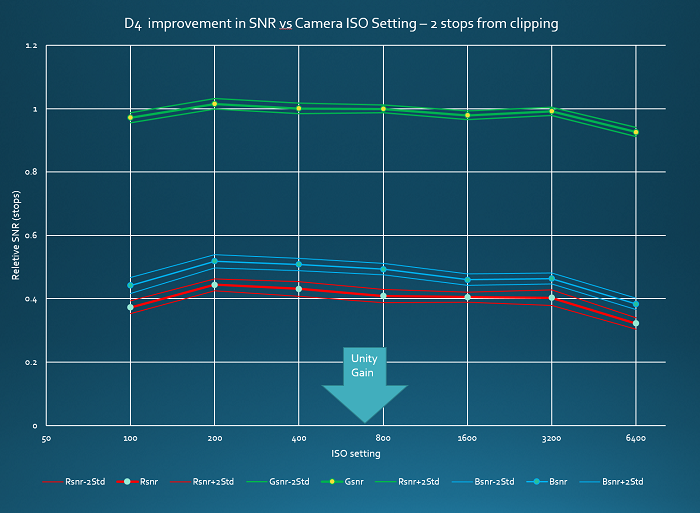
As you can see, the D4 is essentially ISO-less until about 3200, which is about 2 stops above the UG ISO. Both US ISO and SNR agree that you shouldn't use ISOs above 3200 unless you have some special reason. Up to ISO 6400, the D4 does no bit shifting.
With the D800E, the situation is similar:
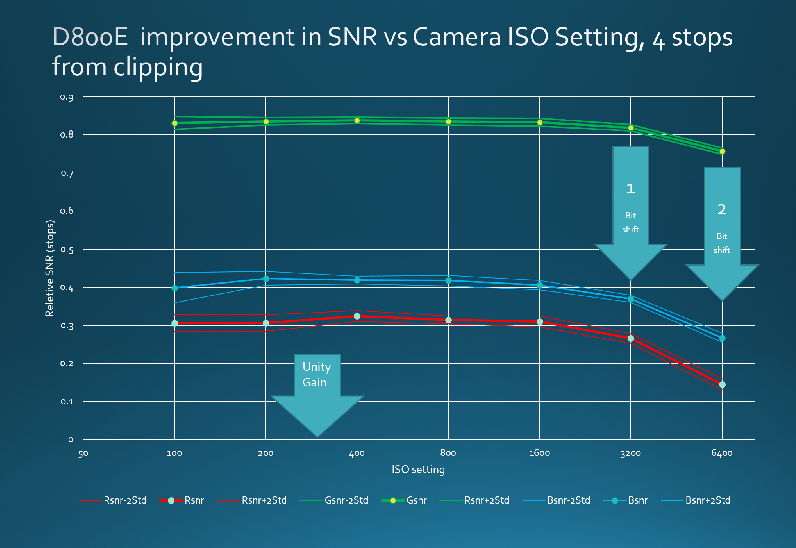
Above ISO 1600, a little over two stops above the UG ISO, the SNR starts to degrade. At ISO 3200, the D800E becomes a 13-bit camera, and turns into a 12-bit camera at ISO 6400. Best to stop at 1600. A friend who is into astrophotgraphy did extensive subjective testing with his D800E and decided that you shouldn't go any higher than 1250.
With the Sony RX-1, here's the situation:
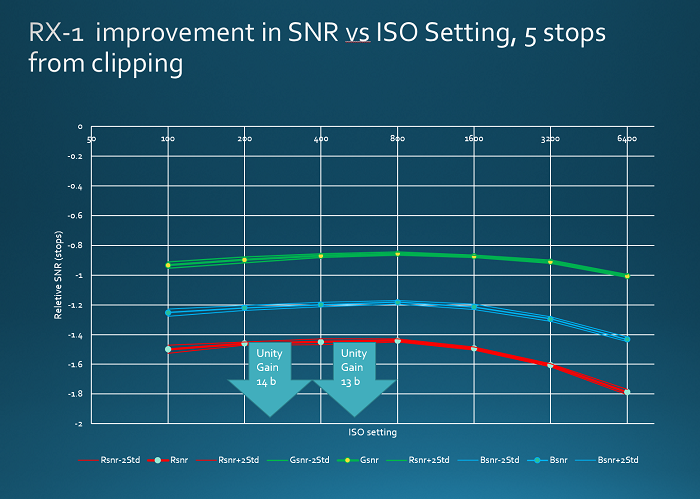
The reason for the two UG ISO arrows is that, although Sony advertises the RX-1 as a 14-bit camera, my copy has every other histogram bucket empty, indicating that it's really a 13-bit camera. The SNR curves show that less than two stops above the 13-bit UG ISO, the party is pretty much over. Up to ISO 6400, the RX-1 does no bit shifting.
With the Sony NEX-7, the curves look like this:
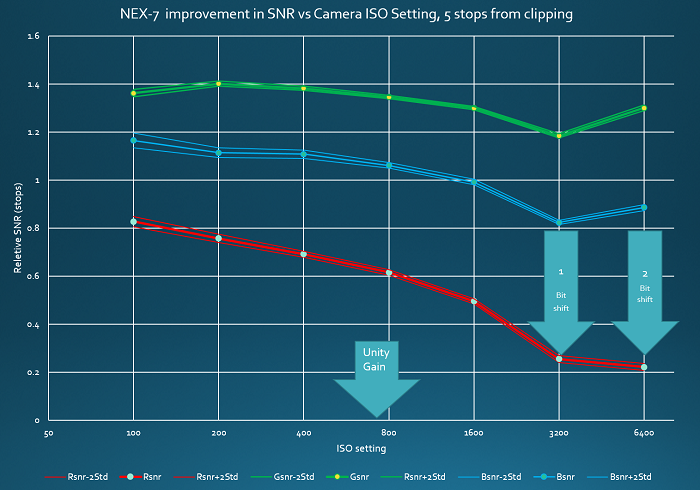
These curves give a different result from the ones above with respect to UG ISO. They indicate that you shouldn't use the NEX-7 above its UG ISO. Because the NEX7 is a 12-bit camera, the UG ISO is two stops higher than it would be if it were a 14-bit camera. If it were a 14-bit camera, the two-stops-above-UGISO rule would apply.
Now for something completely different. Here are the curves for a camera with a non-Sony sensor. In fact, the sensor in the Leica M9 isn't even a CMOS sensor:
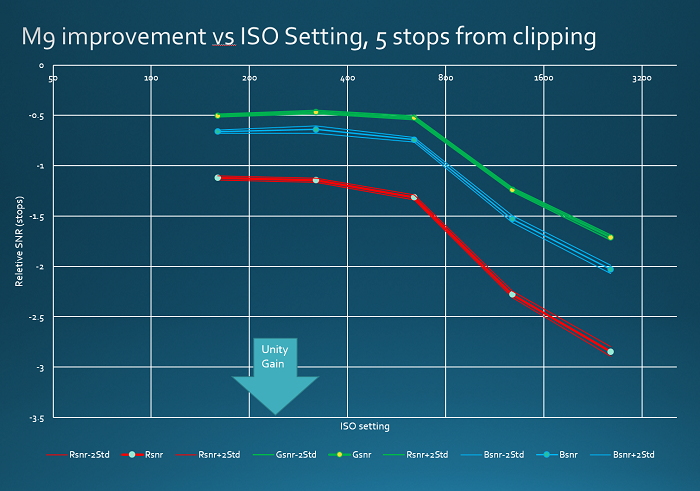
We see dramatic reductions in SNR above 640, which is about a stop and a half abouve the UG ISO. The M9 does no bit shifting.
I don't have results for any Canons, and I have been told that they do better than the five cameras for which I've shown data here as the ISO increases.
Jim